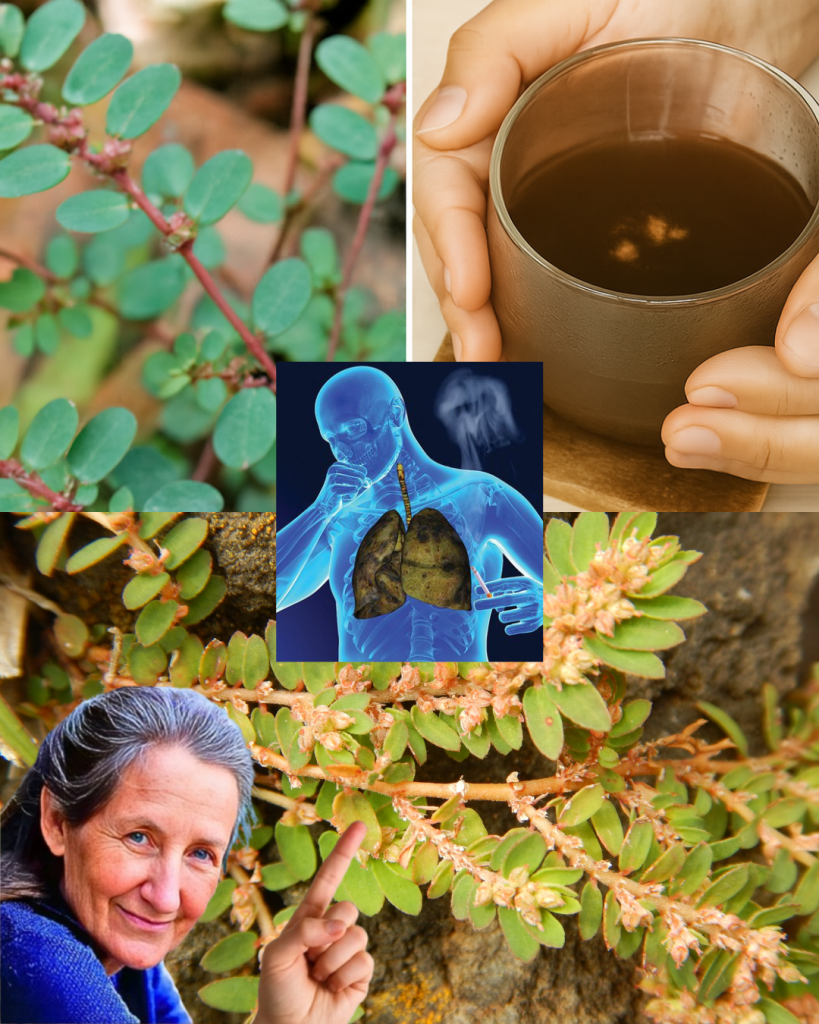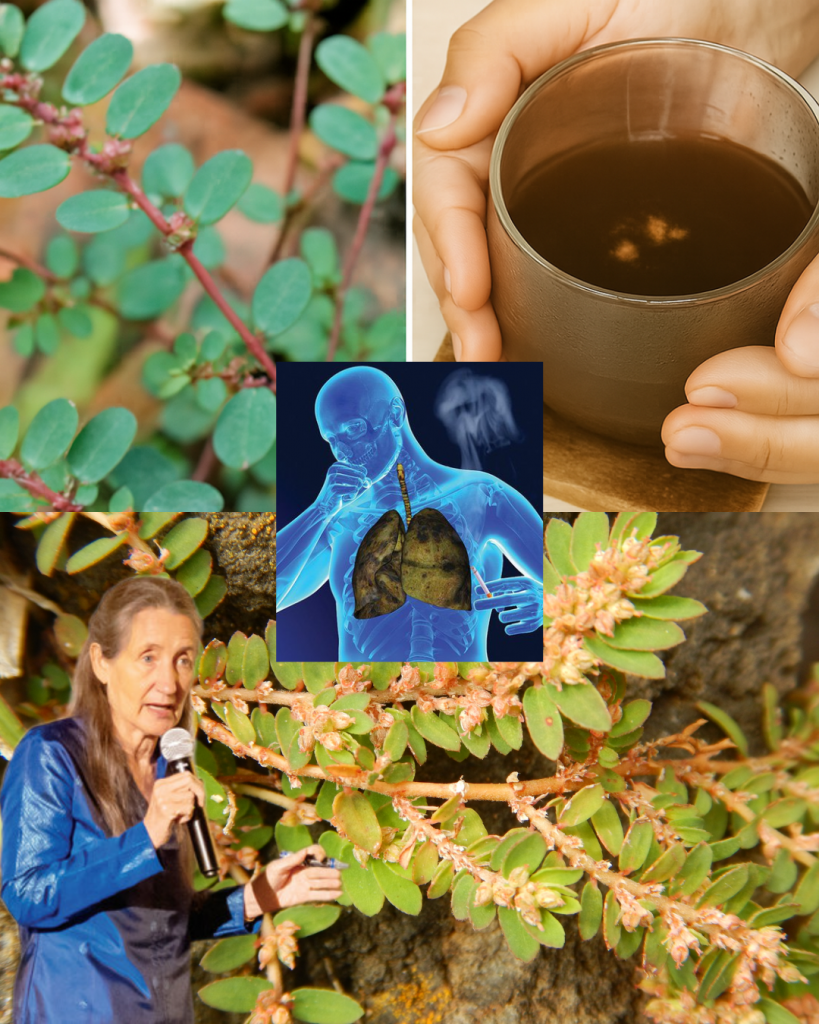Have you ever stumbled across a small, unassuming plant growing in your backyard or along a roadside and wondered if it holds any secrets? Euphorbia thymifolia, commonly known as laghududhika or choti-dudhi in India, is one such plant that might look like a humble weed but is packed with incredible medicinal potential. For centuries, traditional healers across tropical regions have used this prostrate herb to treat everything from digestive issues to skin conditions. Curious about how this tiny plant can make a big difference in your life? Let’s explore its fascinating properties, uses, and a simple way to harness its benefits at home! 🌿

What Is Euphorbia Thymifolia?
Euphorbia thymifolia is a small, annual, prostrate herb from the Euphorbiaceae family, often found in tropical and subtropical regions like Asia, Africa, and the Americas. Its stems, which can grow up to 25 cm long, spread out close to the ground, often forming dense mats up to 60 cm wide. The plant’s tiny, ovate to oblong leaves (3–9 mm long) and inconspicuous flowers, arranged in clusters called cyathia, give it a modest appearance. But don’t let its size fool you—this herb is a powerhouse of bioactive compounds.
Known by names like thyme-leaved spurge or gulf sandmat, it thrives in disturbed soils, sandy or gravelly areas, and even arid conditions, thanks to its drought-tolerant adaptations like hairy leaves that reduce water loss. It’s a common sight in places like India, where it grows in plains and low hills up to 5,500 feet.
Why Euphorbia Thymifolia Stands Out
What makes this plant so special? Its rich phytochemical profile is the key. Euphorbia thymifolia contains flavonoids, tannins, steroids, terpenoids, glycosides, essential oils, and compounds like quercetrin, cymol, carvacrol, and salicylic acid. These components give it a range of therapeutic properties, including:
- Anti-inflammatory: Reduces swelling and pain.
- Antioxidant: Fights free radicals to support overall health.
- Antibacterial and Antiviral: Combats infections and even prevents viral infections like tomato spotted wilt virus in some studies.
- Anthelmintic: Helps expel parasitic worms.
- Laxative and Astringent: Aids digestion and bowel health.
In traditional medicine, it’s a go-to remedy for ailments like dysentery, diarrhea, respiratory issues, skin conditions, and even venereal diseases. Its leaves, seeds, and fresh juice are used in various forms, from decoctions to pastes, making it a versatile addition to natural healing practices.
A Simple Euphorbia Thymifolia Remedy for Digestive Health
Ready to tap into the power of this herb? Here’s a straightforward, traditional recipe for a decoction to help with digestive issues like diarrhea or dysentery. This method is safe for most people when used correctly, but always proceed with caution due to the plant’s potent compounds.
What You’ll Need
- Fresh Euphorbia thymifolia leaves and stems (10–15 grams)
- 2 cups of clean water
- A small pot
- A strainer
- A clean container
Step-by-Step Process
- Harvest and Clean:
- Collect fresh Euphorbia thymifolia from a clean, pesticide-free area. Look for plants with green or reddish stems and small, ovate leaves.
- Rinse the leaves and stems thoroughly under running water to remove dirt or debris.
- Prepare the Decoction:
- Place the cleaned plant material in a pot with 2 cups of water.
- Bring to a boil, then reduce to a simmer for 10–15 minutes until the liquid reduces by about half.
- Strain and Cool:
- Remove from heat and strain the liquid into a clean container using a fine strainer.
- Let it cool to a comfortable drinking temperature.
- Dosage and Use:
- Drink 1–2 tablespoons of the decoction twice daily, preferably before meals, for digestive relief.
- Use for no more than 3–5 days unless advised by a healthcare professional.
- Store Safely:
- Keep any leftover decoction in the refrigerator for up to 24 hours. Reheat gently before use.
Tips for Success
- Start Small: Begin with a small dose to ensure you don’t have an adverse reaction.
- Use Fresh Plants: Fresh Euphorbia thymifolia is more effective than dried versions for this remedy.
- Consult an Expert: If you’re new to herbal remedies, consult a herbalist or doctor to confirm suitability, especially if you’re pregnant or on medication.
Safety Precautions: Handle with Care
While Euphorbia thymifolia is a potent healer, it comes with a warning. Like many plants in the Euphorbiaceae family, it produces a milky latex that can be toxic and irritating. Here’s what to keep in mind:
- Avoid Skin and Eye Contact: The latex can cause irritation, blistering, or even temporary blindness if it gets in your eyes. Wear gloves when handling the plant.
- Use Sparingly: Overuse of the decoction or other preparations can lead to side effects like purging or stomach upset.
- Not for Everyone: Pregnant women, children, or those with sensitive stomachs should avoid this remedy unless under professional guidance.
- Check for Allergies: Test a small amount of the decoction on your skin or take a tiny sip to ensure no allergic reactions.
- Consult a Doctor: If you’re treating serious conditions like dysentery or suspect a skin tag or growth isn’t benign, seek medical advice before using this herb.
Why Choose Euphorbia Thymifolia?
This herb stands out for its accessibility and versatility. It grows almost everywhere in tropical climates, often right under your feet in disturbed soils or gardens. Unlike expensive medications or complex treatments, Euphorbia thymifolia is free if you forage it responsibly and requires minimal preparation. Its wide range of applications—from digestive aids to skin health—makes it a valuable addition to any natural remedy toolkit.
Plus, its rapid growth cycle (completing in 3–4 months) and ability to thrive in tough conditions mean it’s sustainable and easy to find year-round in warm climates. However, be cautious about mistaking it for similar species like Euphorbia hirta, which shares the name dudhi and has overlapping uses but distinct features.

Complementary Uses and Alternatives
Want to maximize the benefits of Euphorbia thymifolia? Pair it with other natural remedies for enhanced effects:
- Neem Leaves: Combine with neem for skin conditions, as both have antibacterial properties.
- Ginger: Add a small piece of ginger to the decoction for extra anti-inflammatory and digestive support.
- Aloe Vera: Apply aloe gel after using Euphorbia thymifolia paste on skin to soothe any irritation.
If Euphorbia thymifolia isn’t available, consider Euphorbia hirta, which has similar medicinal properties but requires careful identification to avoid confusion.
Rediscover Nature’s Pharmacy
Euphorbia thymifolia is proof that nature’s smallest offerings can have the biggest impact. Whether you’re dealing with a stubborn stomach issue or seeking a natural way to support your health, this tiny herb delivers. By using it thoughtfully and safely, you can tap into centuries-old wisdom and feel empowered to take charge of your wellness. Why let this humble plant stay a stranger? Start exploring its potential today—your body might thank you! 🌱
Have you ever used Euphorbia thymifolia or another herbal remedy? Share your experience—it could inspire others to embrace nature’s healing power









